Mahindra has long been known as a tractor brand and a maker of rugged utes and SUVs, but it’s now dipping its toe into Australia's light SUV segment.
The XUV 3XO marks a further shift in the Indian brand’s local focus from rural and regional to metropolitan.
This tiny SUV goes up against some stiff competition including the Chery Tiggo 4, Hyundai Venue and Kia Stonic, among others. However, the Indian-made SUV holds a specific title that’ll make it stand out among the crowd.
Price and features – Does it represent good value for the price? What features does it come with? 9/10
9 / 10
The Mahindra XUV 3XO is currently Australia’s cheapest SUV.
There’s a caveat, however, because this is thanks to an introductory pricing offer that ends on August 31.
Currently though, the XUV 3XO line-up starts at $23,490 drive-away for the AX5L and extends to $26,490 drive-away for the AX7L, as tested here.
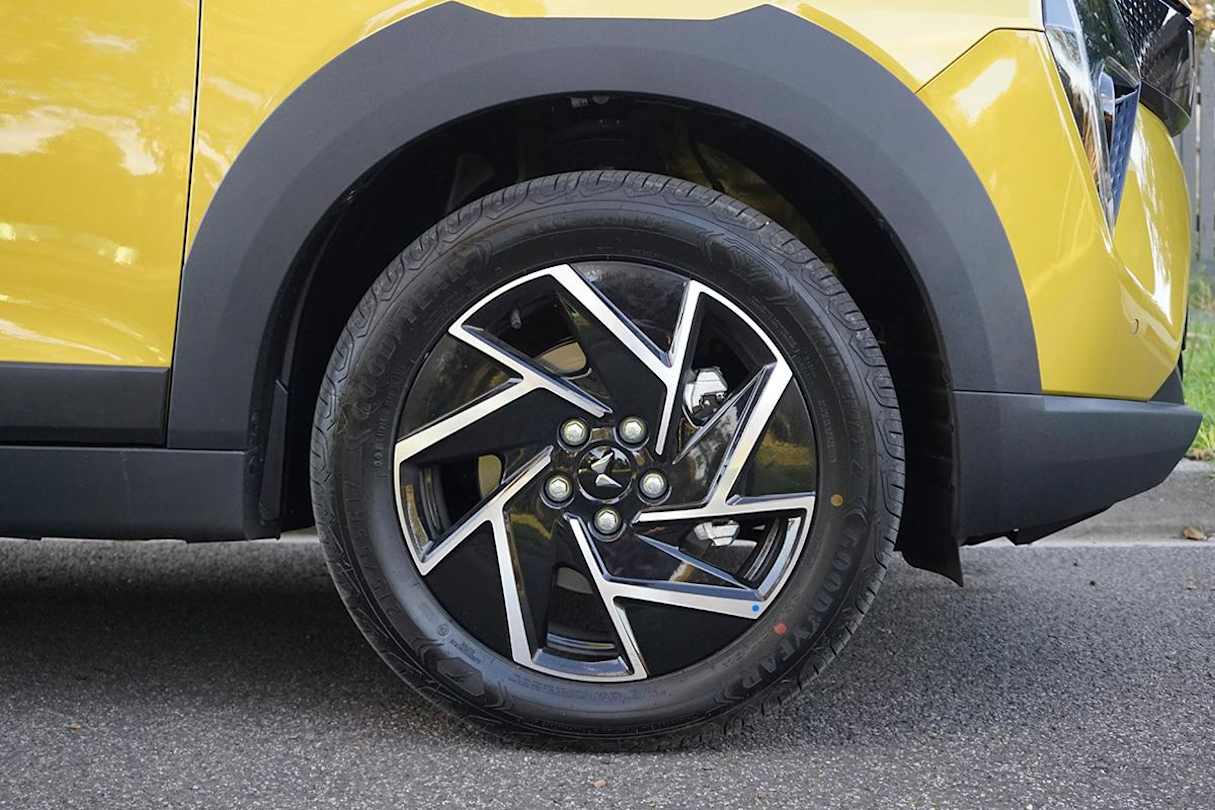
After August 31 the drive-away asking price of both of these XUV 3XO variants is set to go up by $500. This will see it share the title of Australia’s cheapest SUV with the Chery Tiggo 4.
Despite the affordable asking price, Mahindra has packed a lot of standard kit. This includes 16-inch diamond-cut alloy wheels, 10.25-inch digital instrument cluster, 10.25-inch touchscreen multimedia system, wireless Apple CarPlay and Android Auto, six-speaker sound system, dual-zone climate control, electric park brake with auto-hold, keyless entry and push-button start, leather steering wheel and gear selector and black cloth upholstery.
For an extra $3000 in the AX7L you get a black-painted contrast roof, 17-inch diamond-cut alloy wheels, LED front fog lights, panoramic glass sunroof, seven-speaker Harman Kardon sound system, 65W USB-C charger, cooled glovebox, black synthetic leather upholstery, and synthetic leather on dashboard and door trims.
Design – Is there anything interesting about its design? 7/10
7 / 10
From outside it’s surprising just how small this SUV is. At just under four metres long, the XUV 3XO is shorter than a Mazda2, for example.
The reason for this is because in India there are tax breaks for vehicles under four metres long. The Ford EcoSport, sans the tailgate-mounted spare wheel, was another SUV that met this requirement.
As a result of being so short, this has made the rear overhang virtually non-existent. It’s a strange look, especially because the bonnet is so much longer.
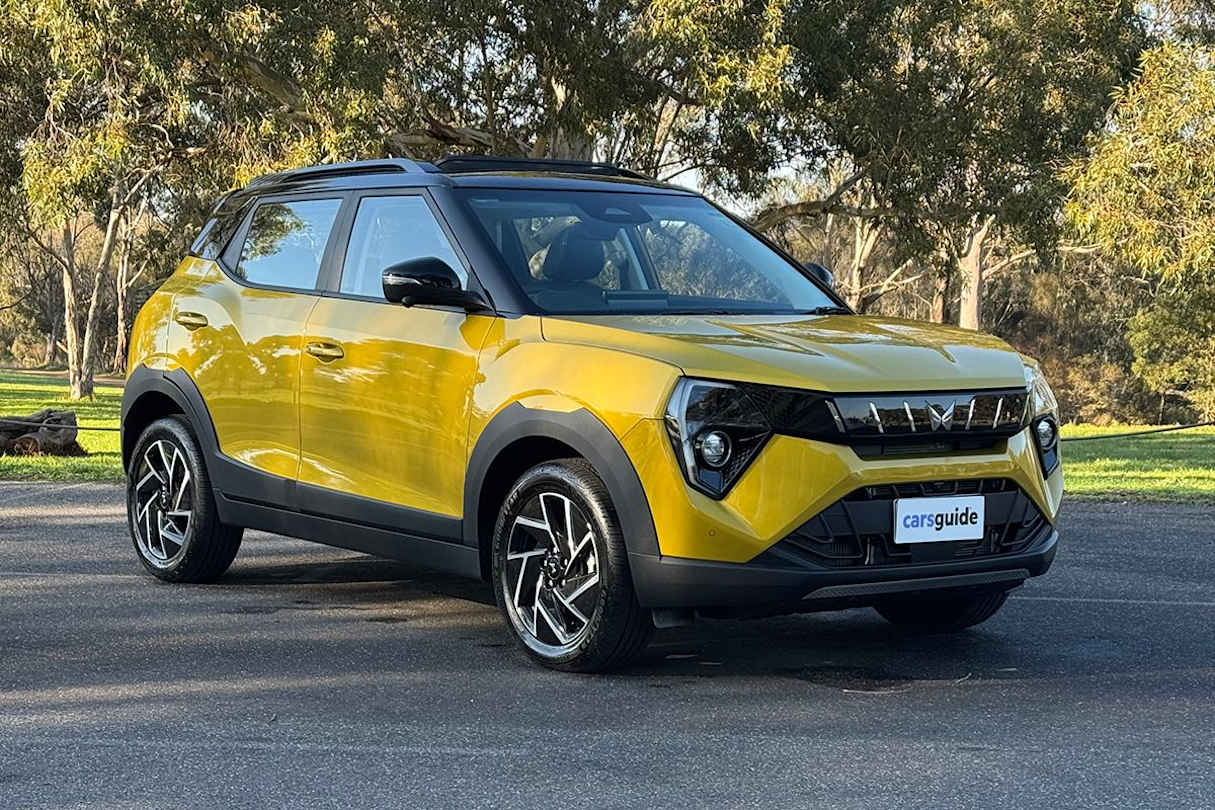
Even though the XUV 3XO is based on the KGM Tivoli (formerly SsangYong Tivoli), which was briefly sold in Australia, you’d be hard-pressed to find visual similarities. The former looks more modern from the outside and has more visual interest with the chunky wheel-arch cladding and diamond motifs.
At the front it’s hard to not see the face of a sad panda. The LED headlights are big and plunge down the front fascia, giving it a droopy and sleepy appearance. It’s not helped by the thick black bar connecting them.
Around the side the diamond-cut alloy wheels are a nice touch, along with the contrast black-painted roof on this AX7L tester.

The rear end is a little on the flat side, though the badging is tasteful. I’m not a fan of the full-width LED light bar, however, as it’s an overdone design cue now.
Inside I appreciate the mix of both old-school and new-school. There are dual 10.25-inch screens ahead of the driver for the digital instrument cluster and touchscreen multimedia system, as well as plenty of physical buttons and knobs for shortcuts and the climate controls.
For such an affordable car I’m surprised how many soft-touch finishes there are in this car. In the AX7L you get an extended use of synthetic leather on the door cards and dashboard, which helps make for a pseudo-premium look and feel.
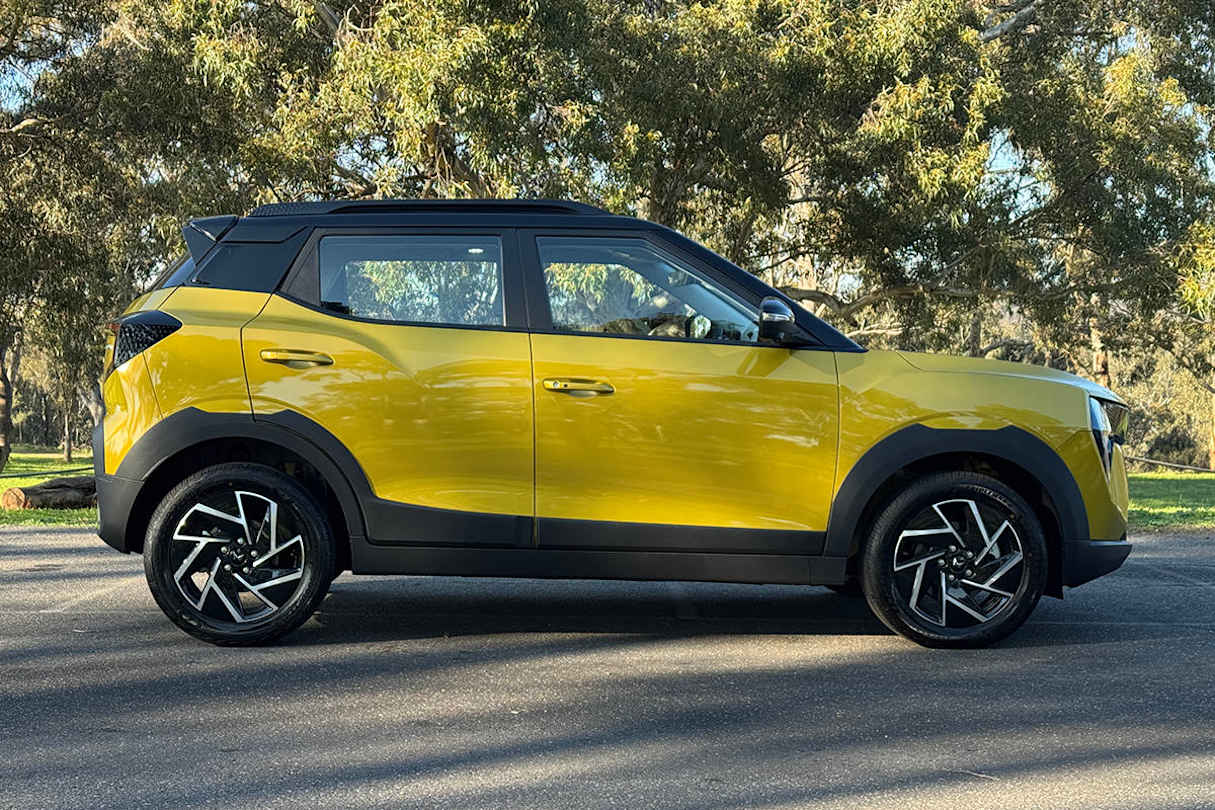
However, one of my biggest gripes with the XUV 3XO interior is the amount of glossy piano black. It’s on the dashboard, centre console, door cards and even the steering wheel.
This may look cool and slick when you pick the car up from the dealer, but it shows up dust quickly and then gets scratched when you try to wipe it clean. Our tester had fewer than 1000km on the odometer and the centre console was already scratched to the wazoo.

Practicality – How practical is its space and tech inside? 8/10
8 / 10
Given this SUV is tiny, I’m blown away at how much interior space it has.
Up front both the seats are manually adjustable, which is to be expected at this price point. Despite this, they’re still comfortable and offer an elevated driving position which is something SUV buyers seek.
In front of the driver is a leather-wrapped steering wheel which feels nice in the hand. While it offers tilt adjustment, it disappointingly doesn’t have reach adjustment. This is frustrating if you’ve got long legs and short arms, like myself.
The 10.25-inch digital instrument cluster has an overall dark and minimal look, but you can cycle through a range of informative views. There’s even one that allows you to display a full-width map.
Moving across, the 10.25-inch touchscreen multimedia system appears to be snappy enough. I’ve experienced fewer glitches in this car than in previous Mahindras I’ve driven.
I like the physical shortcut buttons underneath the touchscreen because it allows you to jump around to key sub-menus a lot easier.
As standard there’s both wired and wireless Apple CarPlay and Android Auto connectivity. With my iPhone 15 Pro Max the connection was flawless and only dropped out during known interference points.
This AX7L spec comes with a seven-speaker Harman Kardon sound system which gets this tiny car booming. The subwoofer in the boot is so powerful it almost feels like overkill.
In terms of storage up front there are two cupholders, big door pockets with two bottle holders, a centre armrest and a cooled glovebox. There’s also a USB-A port, 65W USB-C port and a wireless charger.
Moving to the second row there’s a decent amount of space for adults to sit behind adults. You could easily fit two adults along the rear bench, though pushing it to three would get a little too squishy.
Second-row amenities include rear air vents, a USB-C port with a phone slot, as well as a fold-down armrest with cupholders.
At the back there’s a manual tailgate, which is to be expected at this price point, but finding the trigger to open it is a little tricky. It’s a small button that’s hidden away.
Once the tailgate is open, the amount of boot space on offer is generous. Mahindra claims there’s 364 litres with the rear seats upright.
While the loading lip is high, the boot area is deep and wide. Unfortunately there’s no cargo cover available as standard, which means you’ll need to be careful what you boot back there.
Under the boot floor there’s a space-saver spare wheel, which is fantastic peace of mind if you travel long distances away from tyre repair shops.
Under the bonnet – What are the key stats for its engine and transmission? 7/10
7 / 10
All variants are powered by a 1.2-litre turbocharged three-cylinder petrol engine that produces 82kW of power and 200Nm of torque.
This is mated to an Aisin-sourced six-speed torque-converter automatic transmission with drive sent to the front wheels only.
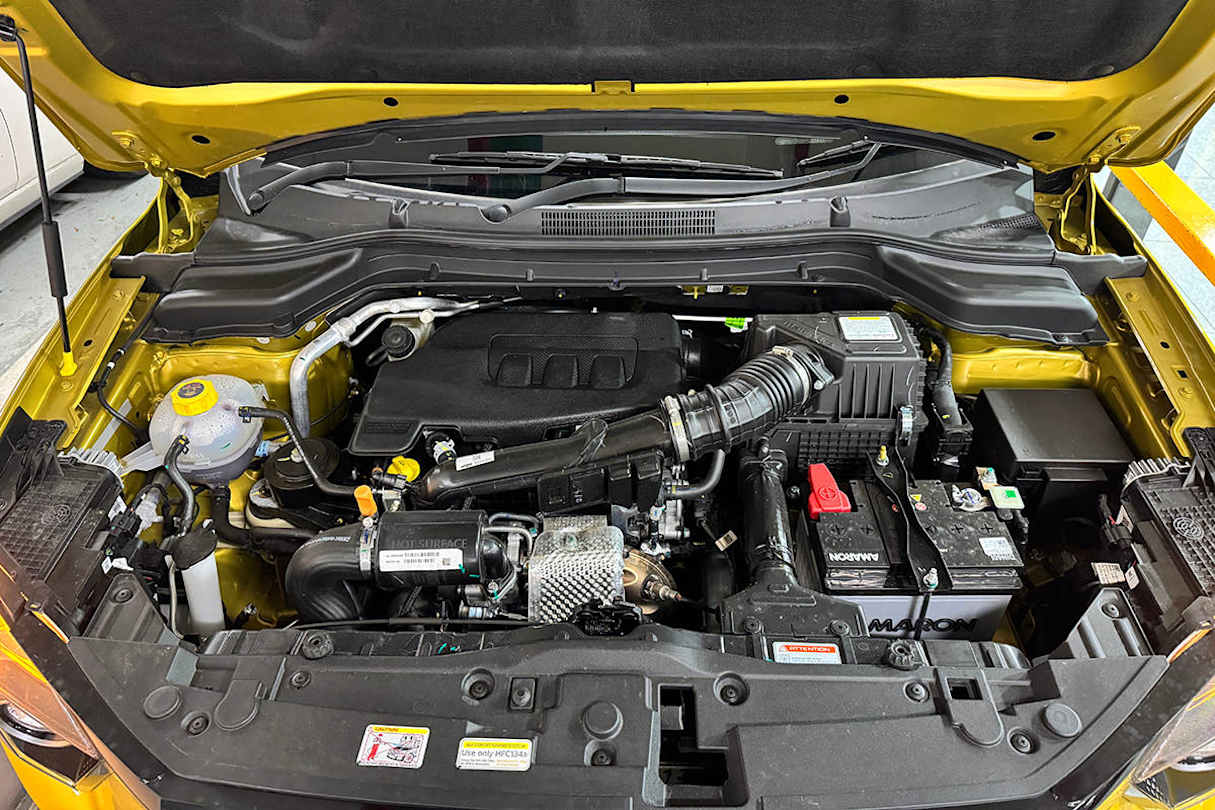
Efficiency – What is its fuel consumption? What is its driving range? 8/10
8 / 10
Mahindra claims the XUV 3XO has a combined urban/extra-urban fuel consumption of 6.5L/100km.
During my testing, however, I achieved a real-world fuel consumption figure closer to 6.2L/100km, which is better than the claim.
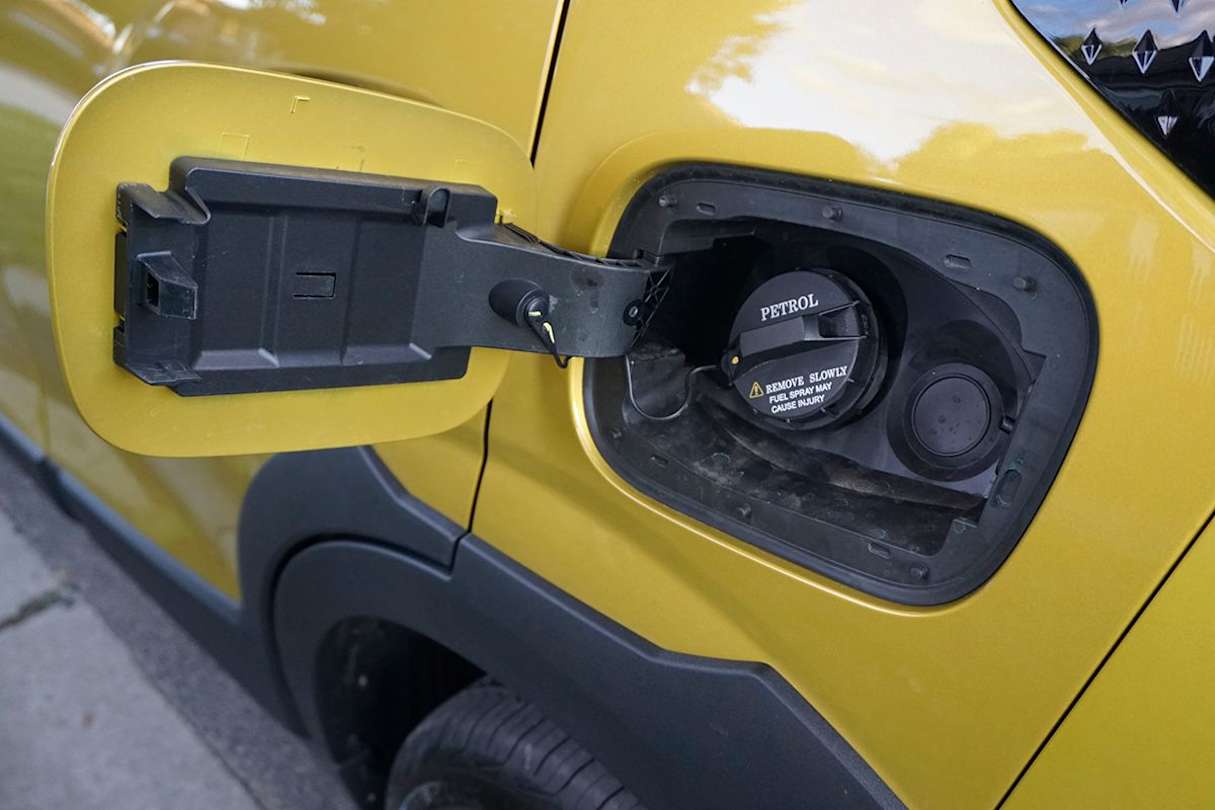
All XUV 3XOs have a 42L fuel tank that Mahindra claims can take 91 RON regular unleaded petrol, but 95 RON premium unleaded petrol is recommended.
With my as-tested fuel consumption this means the theoretical driving range from a full tank of petrol is around 675km.
Driving – What's it like to drive? 7/10
7 / 10
Behind the wheel, the Mahindra XUV 3XO feels refreshingly old-school.
The 1.2-litre turbocharged petrol engine does seem like it would be underpowered, but in practice it’s completely adequate. Peak torque comes on tap from 1500rpm so it doesn’t have to work too hard at all.
It’s fun hearing the noise the three-banger makes when under the boil. You don’t hear it much though because the revs are typically kept down low to minimise fuel consumption.
The key reason why this car feels old-school is the six-speed torque-converter automatic transmission. It’s nice to not drive an affordable everyday car that doesn’t have a continuously variable transmission (CVT) or dual-clutch automatic transmission as these can suck the life out of a car or be jerky.
The gear shifts in the Mahindra are sometimes docile, but are smooth and measured. It just operates like a regular car that doesn’t require you to rewire your brain to drive.
There are three drive modes to choose from. They’re hilariously called ‘Zip’, ‘Zap’ and ‘Zoom’. These correspond to Eco, Normal and Sport, respectively.
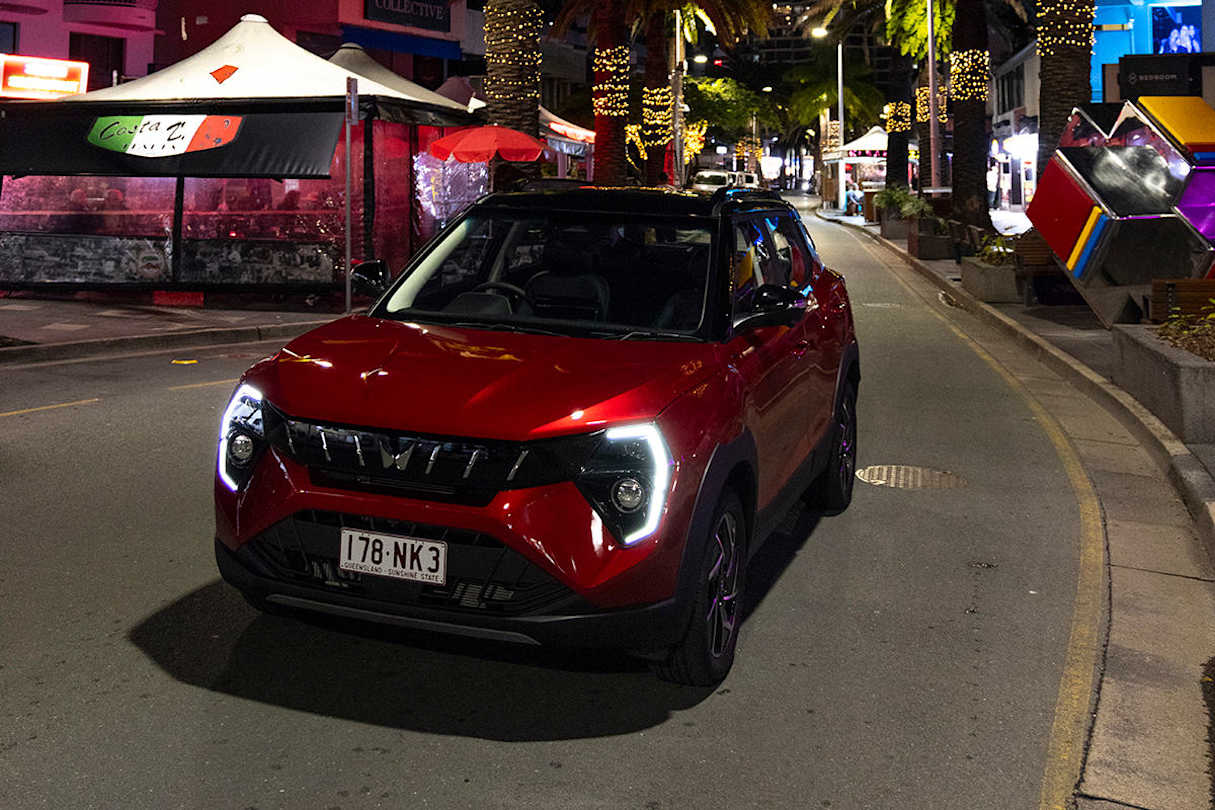
While I did eventually get used to driving in the ‘Zap’ mode, it felt a little snoozy at points, taking a beat or two to get the car accelerating with traffic. You can sidestep this with ‘Zoom’ which feels much more lively. If you activate cruise control or restart the car, though, it defaults back to ‘Zap’.
The XUV 3XO makes the most sense in the city where you’re able to use its tiny exterior dimensions to navigate tight urban carparks and narrow laneways with ease.
It almost became a challenge for myself to find the smallest parking spot I could slot this car into. As standard on this AX7L there are front and rear parking sensors, as well as a surround-view camera system.
Where this car is let down, however, is the steering feel. It’s incredibly light at low speeds and then as the speed builds it gets very heavy. So much so it feels like I’m getting an arm workout.
Unlike some of its rivals, there is still a semblance of feel through the steering wheel, but this drastic change from light to heavy steering weight is too stark. Somewhere in the middle would be nice please.
Something Mahindra is very good at is developing a comfortable suspension tune and this car is no different. It can tackle pimply urban road imperfections and speed bumps with no problems whatsoever.
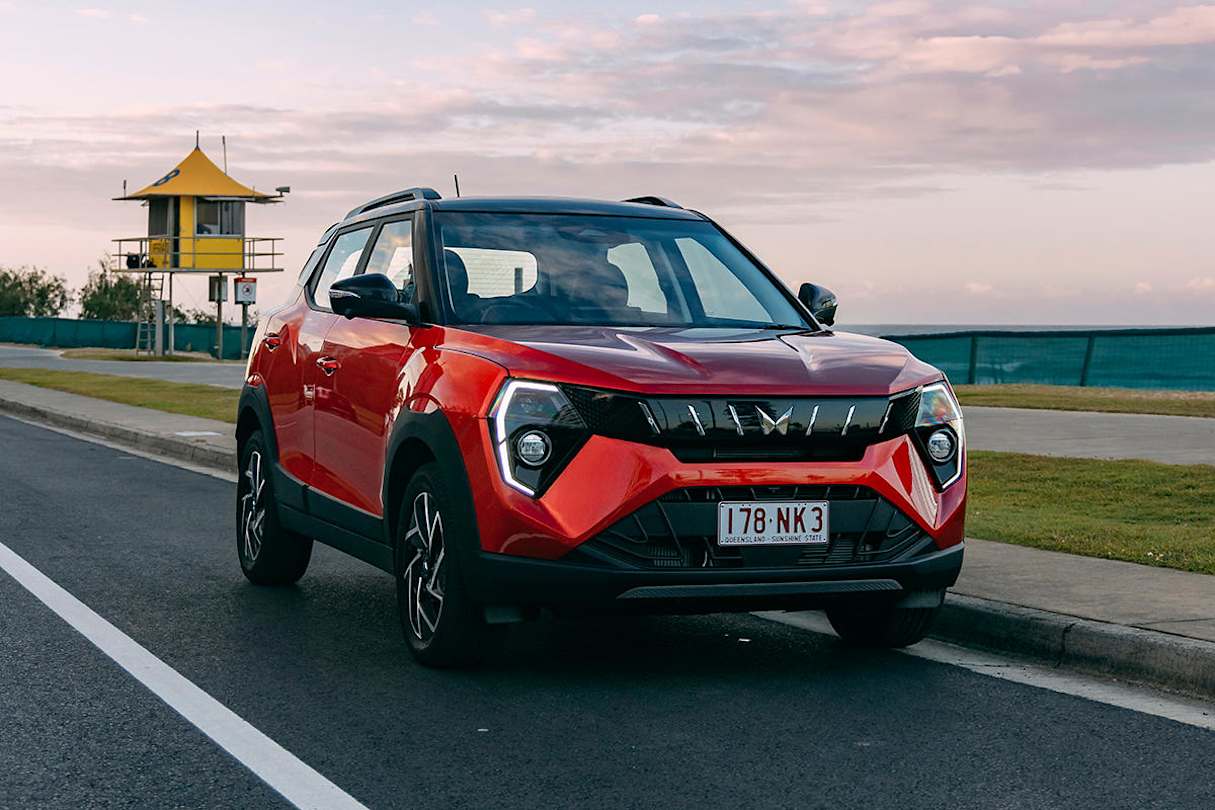
Out on the open road this car surprised me. It feels like a much larger car than it actually is and doesn’t get blown around in the lane like small cars can.
The three-cylinder turbo-petrol engine remains confident at higher speeds, though if you frequently travel up hills the fuel consumption will skyrocket. There’s also a bit of road noise, which is to be expected when a car is this small.
For the most part the suspension does a fantastic job at rounding out road imperfections, but bigger bumps or potholes can unsettle the car. It’s not helped by the larger 17-inch alloy wheels.
Out in the twisties this tiny SUV is fairly agile. It’s not the sportiest thing out there by a vast degree, but it remains planted and solid even when pushed into harder corners.
Lastly, another point that makes this car feel old-school is the lack of obtrusive bings and bongs from the safety systems.
Sure the parking sensors can be a little over-the-top and the traffic sign recognition takes over the entire digital instrument cluster when it picks up a new speed limit, but having no driver attention monitor and intelligent speed limit assist is refreshing.
It’s not all perfect however as the lane-keep assist is too hands on for my liking. It activates from 60km/h and is quite overt in how it directs the car through bends.
Safety – What safety equipment is fitted? What is its safety rating? 7/10
7 / 10
The Mahindra XUV 3XO hasn’t been crash-tested by ANCAP just yet.
It was, however, tested by India’s less stringent Bharat NCAP testing authority in 2024 and received a five-star rating.
Standard safety equipment includes autonomous emergency braking (AEB), lane departure warning, lane-keep assist, lane centring, adaptive cruise control, traffic sign recognition, rear parking sensors and a reversing camera.
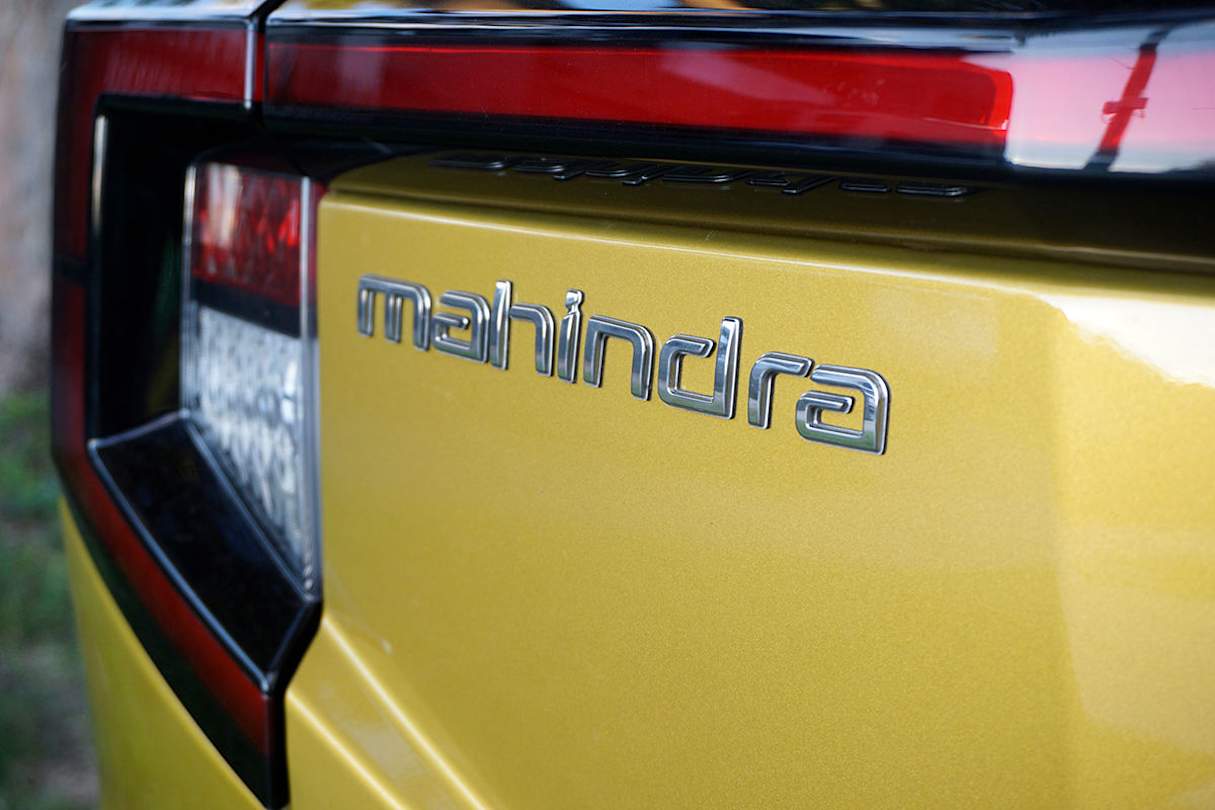
Stepping up to the AX7L gets you a surround-view camera, blind-spot view camera, and front parking sensors.
Notably absent from the entire range is rear cross-traffic alert, as well as a traditional blind-spot monitor that alerts you when a car is in your blind-spot.
There are two ISOFIX points on the two outboard rear seats, as well as three top-tether child seat anchorages across the rear bench.
Ownership – What warranty is offered? What are its service intervals? What are its running costs? 8/10
8 / 10
Like other current Mahindra models, the XUV 3XO is covered by a seven-year, 150,000km warranty with seven years of roadside assistance.
Logbook servicing is required every 12 months or 15,000km, whichever comes first, though the first service is required after 12 months or 10,000km.
The first seven services are capped-price and total $1994. This averages out to $284.85 per service.
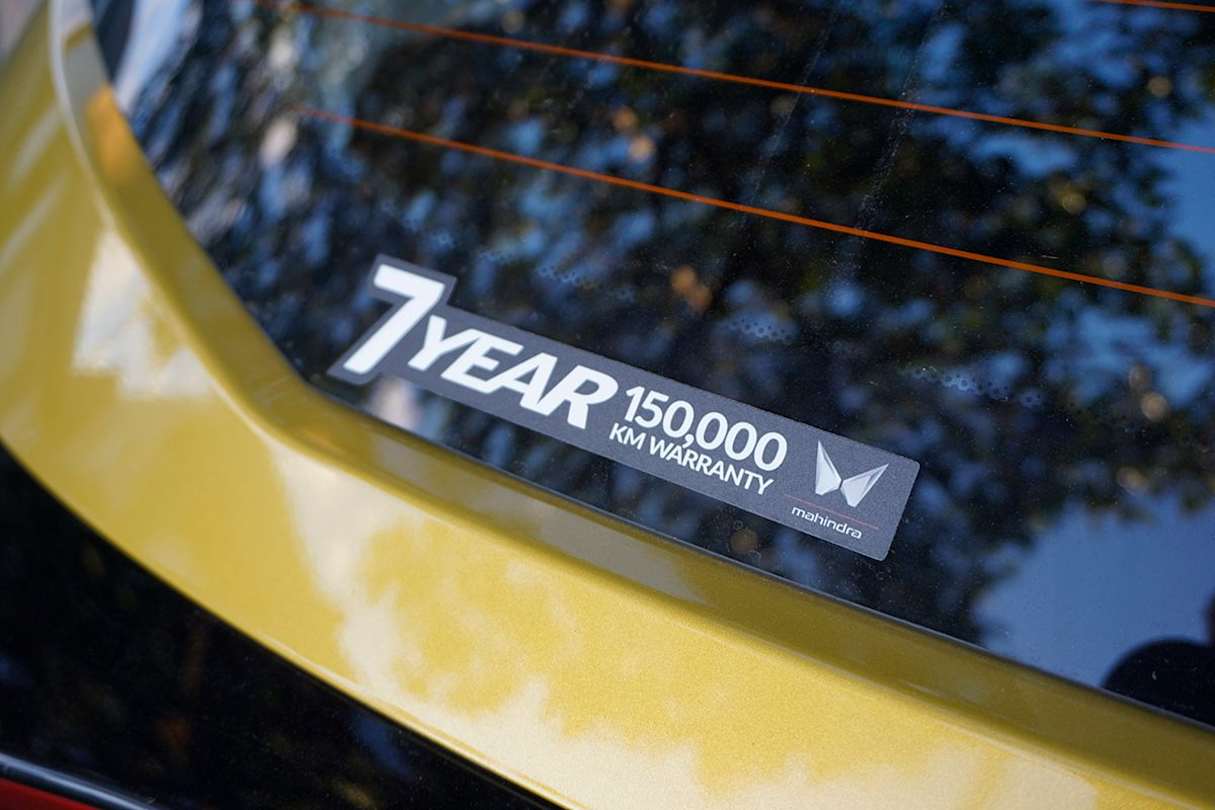
Verdict
The fact this is Australia’s cheapest SUV is a massive feat for the Indian brand. It also has so much standard kit so this is even more surprising.
In many ways the XUV 3XO is better to drive than its rivals. The three-cylinder turbo engine has plenty of charm and moves this car along with ease, the car feels confident and composed out on the open road, and there aren’t any bings and bongs from intrusive safety systems.
However, things aren’t perfect. I wish the steering column offered reach adjustment, the steering feel wasn’t so inconsistent and the lane-keep assist wasn’t so hands-on.
If you can overlook these quibbles, this tiny Mahindra is an outstanding value buy if you’re considering a first new car.
Note: CarsGuide attended this event as a guest of the manufacturer, with meals provided.


































_0.jpg)
.jpg)


.png)
.jpg)



.jpg)